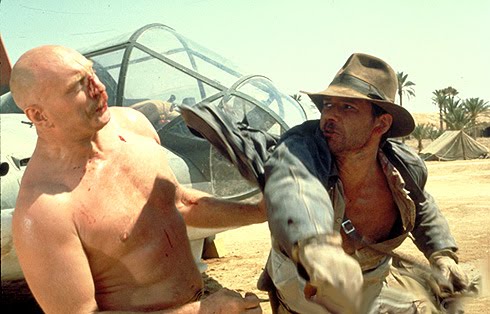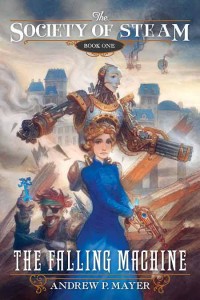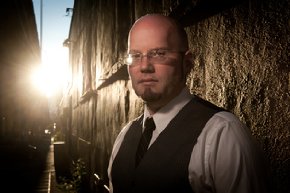No Wives of Snape Here, Please
Now you know me, I view blog posts like cheese. I like to let them age for a bit, get nice and ripe and then take a bite into them and get food poisoning and then puke in front of my in-laws all over my wife’s ailing grandmother and that’s why she divorced me.
So I can understand your shock in seeing a blog post so soon after the last one. Don’t worry, I’m not trying to overwhelm you. If I were going to do that, I would use one of my many doomsday devices for the purpose.
Rather, this is just to address something I was chatting up with my good friend, Robert J. Bennet, author of Mr. Shivers (which you should totally check out if you like darker elements of magical realism and/or hobos on trains). To give a post of the twitter transcript would be a huge pain in the anus, and my anus can bear no more pain, earthly or spiritual, but he made a pretty solid blog post about it here.
A lot of what we wound up talking about was how motivation makes a villain terrifying or…not. A summation of his point (and feel free to tell me if I’m mistaken, Robert) would be that a villain with indiscernible or unfathomable motivation is infinitely more terrifying than a villain who has a genuine emotion behind him.
To some extent, it’s true. To look at his comparison of the Joker and Lord Voldemort, there’s no doubt that the Joker is the more terrifying villain. Though I kind of suspect the comparison is a little unfair. For one, the Joker has been around much longer and even he started off as a goofy lunatic dressed up like a clown who was concerned about boners. It wasn’t until the writers of Batman stopped focusing on the “clown” part and started addressing the fact that this guy was terrifyingly insane that he started to be scary. And that was because someone that insane, who could kill a thousand people to make a point and wore clown make-up like war paint, occupies a strange little uncanny valley in our brains where it’s not likely to happen, but it could happen and just enough of it is realistic that it scares us.
Most of us probably don’t lie awake at night fearing that evil wizards are out to get us because we’re awesome.
But then again, most of us would probably not follow a tremendously overweight, hairy guy in a dirty trenchcoat into the night just because he told us we were special.
Harry Potter is weird.
So yes, the Joker is a more terrifying villain. It’s not necessarily his motive that’s unfathomable so much as his logic. He views society as a joke, sanctity as a set-up and murder as a punchline. The beauty of Batman, as I’ve mentioned before, is that there are no fights, just philosophical dialogues with fists and Joker isn’t going to stop arguing until Batman gets it. The fact that Batman is never going to get it is pretty terrifying.
That momentary nerdgasm aside, I feel the need to point out that the whole “unfathomable motive” thing can go hugely awry in a very quick, very awful way. Frequently, citing Lovecraft as an inspiration as the same way people cite Restless Leg Syndrome as a serious medical condition, people will use words like “unfathomable” and “beyond words” and “too horrifying to be described” and think they’re clever when they’re really just being lazy. The goal is to have created something so horrifying that it just can’t be expressed in mortal terms, but these kinds of buzzwords tend to suggest that it is just too horrible to be expressed in mortal terms and you’re going to have to take the artist’s word at that because he can’t be arsed to show you himself.
This sort of lazy thinking is the same reason we get Dark Lords, Destroyers and Foes of All That Is Good. Villains whose logic is so unfathomable and so inscrutable that it simply isn’t there, whose motivations are so vast and so horrific that they just don’t make sense, and not in a good way. Hopping on the Bandwagon of Darkness tends to lead more often to Saturday Morning Cartoon Villains than to Jokers. Hell, the Joker was a Saturday Morning Cartoon Villain for a while. It took a long time for him to be something much more terrifying.
Given that, I can appreciate Robert’s thoughts as to why the Joker is terrifying. But I feel he’s kind of missing the point in a more human villain.
See, what makes the unfathomable terrifying is that it’s vast, it’s unstoppable and it can’t be reasoned with. It’s inhuman. And in being inhuman, it loses us, at least a little bit. This is why Dark Lords aren’t good villains: the characters are largely insignificant and pointless. We don’t care what he’s doing because he’s just that evil. We have to stop him, sure, but that’s as far as the stakes go.
Human villains are not vast or unreasonable and that’s their appeal. They are distorted reflections, what happens when something happens in a hero’s life that makes him do something that he views as right. And it’s that last part, viewing it as right, that makes a villain interesting. Suddenly, he has a reason for doing what he does beyond the fact that he’s evil and since we can understand it, we have some knowledge of what happens if he wins and if he loses. Sympathetic villains are popular for a reason. If the villain is just straight up evil, the ending is pretty much foregone: either the heroes win and all is saved or the author is feeling edgy and oh no they lost and now you feel used like the page-turning hussy your mama always said you were.
A sympathetic villain makes you have a stake in what he does and thus enhances the conflict. Suddenly, the implications are no longer about what happens if the hero loses but what happens if he wins. It turns that mirror upon the hero, to see if he’s actually doing the right thing and leads to character development. If he’s facing The Destroyer/The Dark Lord/The Goblin King, he doesn’t have to change. The other guy is evil, so he’s good. His only problem is stopping the evil.
I have heard some people lament over the lack of straight up black and white heroes (though, to be totally honest, I get the vague suspicion that some, not all, of those people prefer the notion because black versus white used to be much more terrifying in its implications as to who the savage evil orcs were supposed to be) and I can certainly appreciate a straightforward “evil is evil” story when it’s done right.
But it takes a long time to do it right. Joker long. Until then, all you’ve got is boners.
But maybe I’m wrong. What do you think? Are we just so morally starved that even our villains need to be examples of goodness? Or do we straight up need bad guys who are so bad they kick orphaned kittens into the mouths of old ladies so the old ladies choke and die and then they pose the old ladies in hilarious poses for their loved ones to find?
Tell me.
Tell me everything.
No Wives of Snape Here, Please Read More »





